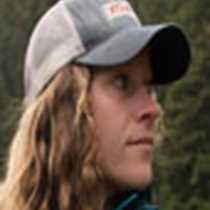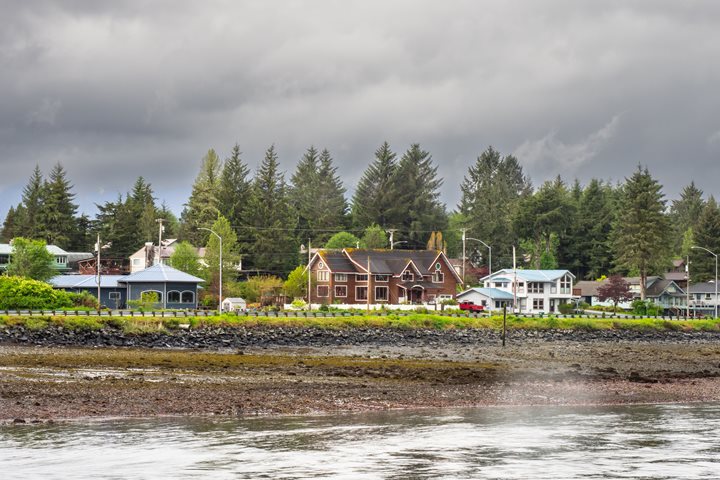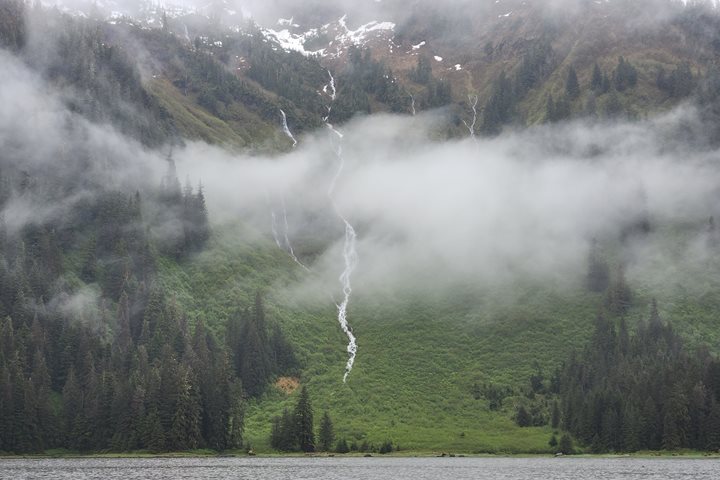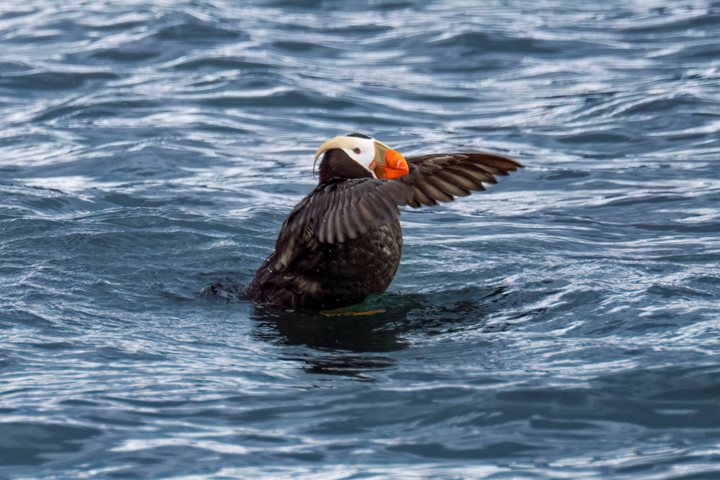On the first day of the expedition our guests woke up with whales! Humpback whales hungrily fed alongside National Geographic Sea Bird as the ship cruised towards Pavlof Harbor, where afternoon activities would take place. Humpback whales exhibit a behavior called bubblenet feeding, which is usually a group activity, but in this case we witnessed a solo activity. Bubblenet feeding involves a ring of bubbles, created by the whale or whales, which will encompass their prey and induce a false barrier which most small fish and krill will not cross. This “net” shunts their prey to the surface in a panic, where the animals will feed in one big gulp. In groups this is a very social behavior, where each animal takes on a different task and they work together towards a common goal; the gulp. Only in Southeast Alaska does bubblenetting exist—we were very lucky to see some individual bubblenet feeding this morning.
Once the ship arrived to Pavlof Harbor the anchor dropped and activities quickly began. Some were kayaking and some were hiking, but all were outside enjoying a rare warm and sunny Southeast Alaskan day. The bay at Pavlof harbor narrows as it gains latitude into a beautiful waterfall. As the summer deepens and salmon begin to feel the primal urge to move back to where they once started, this location becomes ideal for brown bears. This waterfall is the first massive barrier for many fish who ultimately long to complete their lifecycle by laying eggs in their home stream. The bears who seek this place out feed themselves with the salmon the struggle upstream, and the fish carcasses which lay in the forest provide nutrients for the forest roots, helping the ecosystem in a positive manner whether they are able to contribute to the next generation or not.
At the end of the day after a beginning full of adventure and wonder, guests rejoined Sea Bird for their first Recap and a fantastic dinner, a day ending with splendor and contentment.









